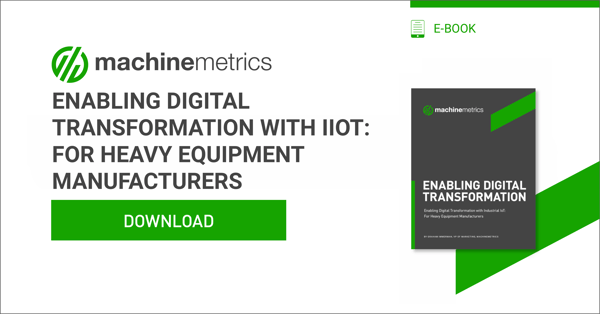Key Takeaways:
- Integrating IIoT with heavy equipment presents unique connectivity challenges.
- Overcoming these challenges can unlock greater operational insights and equipment performance.
- Properly deployed IIoT solutions can enhance monitoring and maintenance strategies.
It’s safe to say that the heavy equipment manufacturing industry has its fair share of challenges. These must be overcome in order to produce equipment that can be sold and used within specified government regulations. Other obstacles OEMs face within the industry include the logistics and supply chain, a growing skills gap, and the need to produce innovative equipment.
The Regulations and Standards Guiding the Heavy Equipment Manufacturing Industry
The regulations guiding the heavy equipment manufacturing industry are centered on safety and keeping the environment free from hazardous materials. Across the world, emission standards for both the manufacturing of heavy equipment and the use of heavy equipment in factory floors exist. For equipment manufacturers in the United States, emission regulations are set by the Occupational Safety and Health Administration (OSHA). These emission regulations take into consideration the class of engines designed for heavy equipment, the environment these equipment options will be used in and the health of the operators working within the environment.
The European Union takes things a bit further by providing regulations concerning the safety features within the equipment. These include kill switches and innovative designs to ensure operators stay within safe operating distances. To avoid violations, OEMs must adhere to these standards across the factory floor, as well as integrating safety features within the equipment they manufacture.
These challenges mean OEMs must optimize manufacturing processes on the shop floor while developing innovative heavy equipment to help end-users stay within specified regulations. The concepts behind Industry 4.0 and the digital transformation it supports provide OEMs with a means to advancing manufacturing operations and understanding how the heavy equipment produced is used. This is where Industrial IoT solutions come into the picture.
Integrating Safety Standards and Enabling Innovation with IIoT Solutions
The conventional manufacturing equipment OEMs use generally have the capacity to capture data such as working temperature and throughput but do not have the features needed to measure the emission rate it produces. The lack of such features can be attributed to the age of the legacy equipment - generally built in the decades when the current emission regulations and safety standards of today were not laws.
Thus, to measure emission rates, heavy equipment OEMs can deploy IIoT hardware with the capacity to capture emission data. The captured data can then be sent to an IIoT platform for further analysis to discover specific operations that increase the emission of hazardous materials. The above scenario is just one example of how IIoT can help OEMs stay ahead of emission and safety regulations. On a larger scale, IIoT provides the ability to capture data from all the heavy equipment an OEM has sold and is currently in use. The captured data can then be leveraged to develop innovative equipment that integrates specific regional standards into their operational processes.
The digital transformation of IIoT provides support for industrial automation due to the interconnectivity and data analytics features integrated into IoT platforms. Therefore, heavy equipment OEMs can deploy IIoT solutions to implement industrial automation tasks and predictive maintenance strategies while adhering to the safety standards guiding the industry.
You can learn more about choosing the best IIoT solutions for your heavy equipment manufacturing facility by downloading our eBook.



.png?width=1960&height=1300&name=01_comp_Downtime-%26-Quality_laptop%20(1).png)

.gif)









Comments